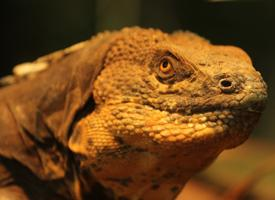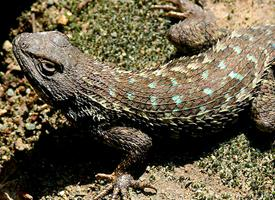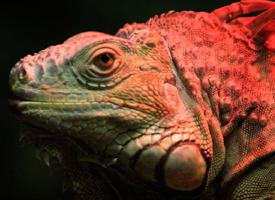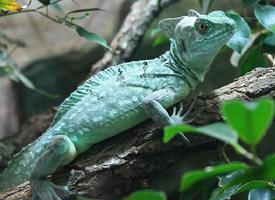
Váhy a míry
| Délka | 100 cm |
|---|
Biologická data
| Délka života | 20 r |
|---|
Popis zvířete
The Black Iguana, scientifically known as Ctenosaura similis, is a fascinating and robust species of lizard native to Central America. This reptile is highly adaptable and can be found in a variety of habitats, ranging from dry forests to rocky regions, showcasing its versatile nature. The Black Iguana is not only intriguing due to its ecological adaptability but also because of its distinctive physical and behavioral characteristics.Physically, the Black Iguana is a large and muscular lizard, with adults often reaching lengths of up to 1.3 meters (4.3 feet), including their long, whip-like tails which make up about half of their body length. Their skin is covered in small, granular scales, with larger, spiny scales adorning their back and tail, providing them with a formidable appearance. The coloration of these iguanas can vary significantly, ranging from a dark, almost black hue to gray or brown, with younger individuals usually displaying a brighter green or brown. This color variation not only contributes to their name but also aids in camouflage within their natural habitat.
One of the most distinctive features of the Black Iguana is its dewlap, a large flap of skin that hangs from the throat, which can be expanded. Both males and females possess this feature, but it is more pronounced in males. The dewlap serves multiple purposes, including thermoregulation, communication, and mating displays, making it a crucial aspect of their behavior.
Black Iguanas are ectothermic, relying on the environment to regulate their body temperature. They are often observed basking in the sun on rocks or branches during the morning to warm up and become active. As cold-blooded creatures, they need to carefully manage their exposure to heat and cold to remain healthy and active.
In terms of diet, Ctenosaura similis is predominantly herbivorous in adulthood, feeding on leaves, flowers, fruits, and occasionally small insects and animals, showcasing an opportunistic feeding behavior. This varied diet plays a significant role in their survival, allowing them to thrive in diverse environments.
Reproduction in Black Iguanas involves elaborate courtship rituals, primarily performed by males to attract females. These rituals can include head bobbing, dewlap extension, and even physical combat between males to establish dominance and mating rights. Females lay clutches of eggs, which they bury in the sand or soil to incubate. The eggs are left to hatch on their own, with the young iguanas being entirely independent from birth.
Black Iguanas are known for their agility and speed. They are excellent climbers and swift runners, capable of moving quickly to escape predators or to catch prey. Their strong, clawed feet are adept at gripping surfaces, allowing them to scale trees and rocks with ease.
Despite their resilience and adaptability, Black Iguanas face threats from habitat destruction, hunting, and the pet trade. In some areas, they are hunted for their meat and eggs, while habitat loss due to agriculture and urban development poses a significant challenge to their populations. Conservation efforts are crucial to ensure the survival of this unique species, including habitat preservation and regulations on hunting and trade.
In conclusion, the Black Iguana (Ctenosaura similis) is a remarkable species, showcasing a blend of fascinating physical attributes, adaptive behaviors, and ecological significance. Their presence in Central American ecosystems highlights the diversity and complexity of these environments, underscoring the importance of conservation efforts to protect these unique creatures and their habitats.
Podobná zvířata
Nové fotografie zvířat
Top 10 zvířat
- Chinese water dragon (Physignathus cocincinus)
- Galápagos tortoise (Geochelone nigra complex)
- Dolphin gull (Leucophaeus scoresbii)
- Japanese macaque (Macaca fuscata)
- Colombian red howler (Alouatta seniculus)
- Sea urchins (Echinoidea)
- Moustached guenon (Cercopithecus cephus)
- Diana monkey (Cercopithecus diana)
- Common reed warbler (Acrocephalus scirpaceus)
- Common house mosquito (Culex pipiens)


